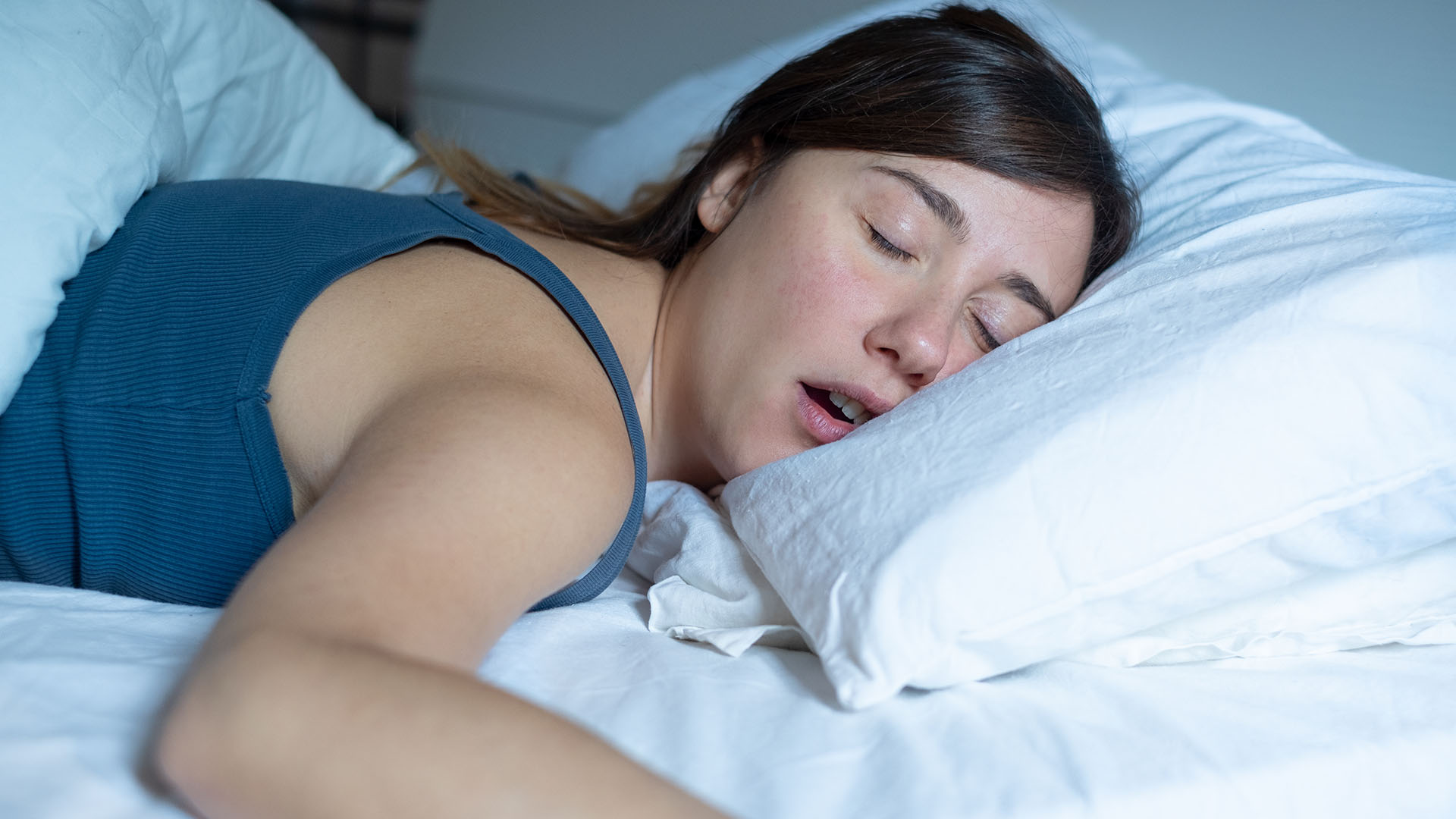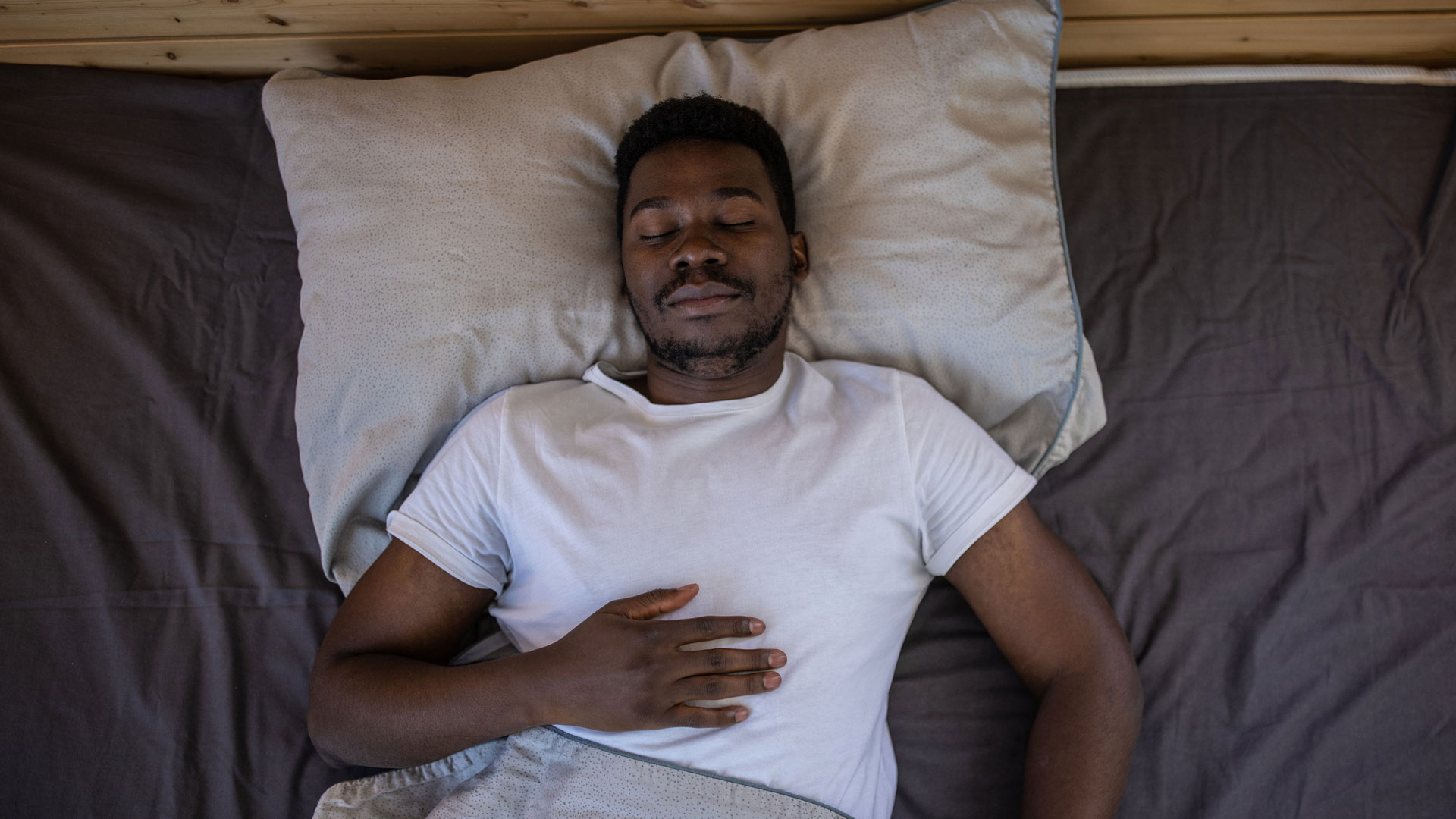Expert explains the science behind mouth taping for better sleep
Plus, how to get the same benefits without sticking your mouth shut

Followers of wellness trends and fans of gruesome horror films might have found an eerie overlap in their TikTok feed lately – mouth taping. Covering your mouth with tape might seem more 'Hostage' than spa, but according to TikTok, mouth taping could have some surprising benefits. Health experts, however, are wary.
Mouth taping has been variously promised to reduce snoring, help freshen breath, stop teeth grinding, end dry mouth, and even potentially sharpen your jawline. The idea is that by covering your mouth with tape, you force yourself to breathe through the nose, and avoid spending the night with your mouth hanging open, drooling onto your best mattress.
Does mouth taping work? A bit, but if you want to breathe through your nose, there are better ways to go about it. We spoke to Time4Sleep sleep expert Dr Hana Patel about why you should avoid mouth taping, and the safer steps you can take to encourage nasal breathing.
Is mouth taping safe for sleep?
Like many of the biggest TikTok wellness trends, while there's some logic to the basic idea, the execution is dicey. Dr Patel warns against mouth taping as it risks blocking the airways. You might also find the uncomfortable sensation makes it harder for you to fall asleep.
@jennygehrken ♬ Just A Girl - No Doubt
If breathing through your mouth is impacting the quality of your sleep, Dr Patel recommends speaking to a doctor before taping your mouth. Mouth breathing can have an underlying cause, such as sleep apnea or asthma, which can’t be fixed with tape.
Still want to give mouth taping a go? Make sure you use actual mouth tape, not any old sticky tape. Mouth tape (like these Transparent Tape Strips from Amazon) should be gentle to apply and remove, so you don’t rip any skin off in the morning.
Is nose breathing better than mouth breathing?
While the method might not be recommended, the reasoning behind mouth taping is actually fairly sound. “It’s worth making an effort to breathe through your nose as it has a number of benefits, including air conditioning and filtration,” Dr Patel explains. “Breathing in and out of the mouth can cause your airways to become dry and irritated, leading to hypersensitive airways, a dry mouth, sore throat and irritating cough.”
Get daily insight, inspiration and deals in your inbox
Sign up for breaking news, reviews, opinion, top tech deals, and more.
How to encourage breathing through your nose
Mouth taping might be off the table (or off the mattress) but Dr Patel has another way to encourage nasal breathing. This breathing exercise is free and easy to do – and you’re less likely to wake up from a nightmare wondering why if you're being kidnapped.
1. Sit comfortably
Hold your spine straight, uncross your legs, and keep your knees a shoulder-width apart. Place one hand on your upper chest and the other on your lower chest.
Now it’s time to start breathing properly. “[Breathe] smoothly and quietly through your nose,” says Dr Patel. “You should be completely relaxed and when you are resting, your breathing should be quiet, gentle and regular.”

2. Relax into your breathing
Remaining in position, pay attention to the areas of your body that move as you breathe. "In particular, concentrate on the area around your lower chest,” says Dr Patel. “Try to relax these areas as much as possible.”
After a few minutes, you can start to relax the rest of your muscles. Take your hand from your upper chest and rest it in your lap. Begin relaxing the muscles in the jaw, before moving down to the shoulders, then the hips, then the legs.
3. Stay relaxed
If you’re used to breathing through your mouth, the gentle nasal breathing might make you feel as though you’re lacking air. Don’t panic. Dr Patel explains that it’s completely normal – and it actually means you’re doing things right.
“Stay calm, in control and above all do not allow your muscles to tense up,” says Dr Patel. "Continue taking these gentle, relaxed breaths for another three minutes and then let your breathing return to normal. Keep breathing through your nose and resist any urge to take a deep breath.”

4. Practice
To encourage the switch to nasal breathing, make sure to practice this exercise regularly. “To start with, you will need to practice this breathing exercise for five minutes, three times a day, until it becomes your normal way of breathing,” says Dr Patel.
Consider incorporating this exercise into your bedtime routine. Not only can it help you become more comfortable breathing through your nose, but it can also help you wind-down in preparation for sleep.

Dr Hana Patel completed her medical training at the University College London in 2005, and became a member of the Royal College of General Practitioners in 2010. She now works as an NHS and private GP specialist in mental health and sleep and is passionate about supporting patients struggling with sleep-related health issues, having previously provided commentary on a range of sleep related topics using her expertise.

Ruth is TechRadar’s Sleep Writer. She’s here to help you find the perfect sleep setup for your budget and personal preferences. As well as keeping a keen eye on everything that’s going on in the world of mattresses, she regularly speaks to experts to help you learn how to improve your sleep habits, whether that’s by debunking sleep myths or explaining the science behind it all. Prior to joining the TechRadar team, she wrote features and product guides for new parents hoping to get a decent night's sleep, as well as writing for a variety of online spaces.